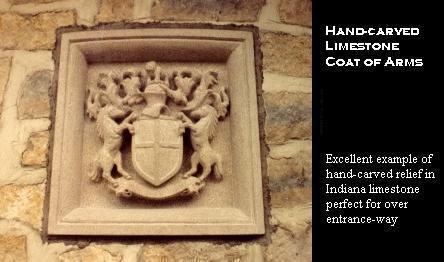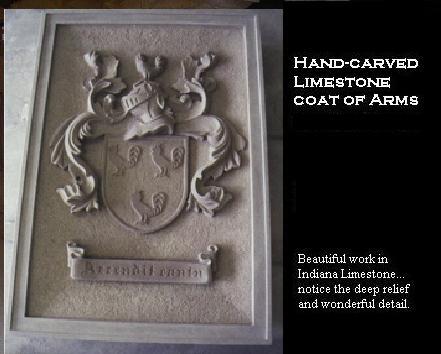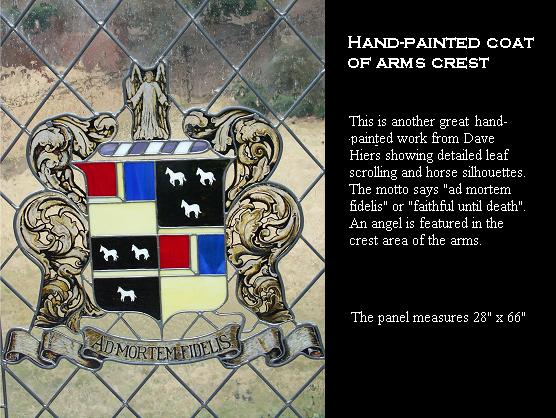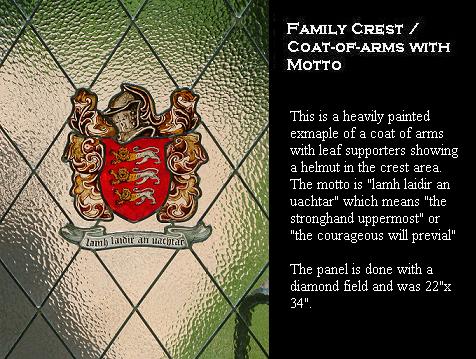| |
|

Home |
Contact Us |
Design |
Leaded Glass |
Crests |
Hardware |
Doors |
Architectural Stone |
Paneling |
Examples |
Gallery |
Clearance |
About Our Company |
Catalog
Family Crests and Coat of Arms (heraldry) in Wood, Stone, or Glass
We will research your family (clan) crest or coat of arms from existing archives -or- can design a crest to your requirements. We can carve your crest into wood or stone or can bring your crest to life in a stained glass panel. We can design the glass panel to fit an existing window or set the panel into a wooden frame. We use only traditional materials - natural stone, walnut, and quality cathedral (or other per your design) glass and lead cane.
About Tudor Heraldry:
Tudor architecture was developed in a transition period of history just after the fortification period in England (1487 - 1607). The most excellent examples of Tudor architecture can be found with the Tudor manors and castles that were being built by royalty, dukes, lords, large landowners, and rich merchants. It was typical in this time for individuals to register a coat of arms that was commonly engrained into architectural components of these wealthy people's residences. These personal emblems were originally created to be emblazen onto armor to enable recognition of soldiers lost in battle. The motto of the coat of arms was originally the person's battle cry. Many modern-day people regard these emblems or heraldry as "crests" or "family crests". However, the "crest" was really only the upper most portion of these coat of arms - usually found above the "shield". "Family crests" really didn't exist in these times as all coat of arms were for individual people. However, families tended to adopt a key ancester's coat of arms as their own. The shield is the primary focus of the emblem and tends to tell a story about the individual. The "supporters" are animals or people or leaves that tend to be on the left and right of the shield and act as "supports" or "holders". The motto usually is placed on a banner and goes either above or below the shield. These coat of arms that were often interwoven into a house's architecture could take the form of beautiful artwork of stone (found many times in the exterior front elevation of the house - mostly carved in limestone and placed over entrance-ways). Other times it would take the form of wooden embellishments in fireplace accents and doorway spandrils (carved arch). These emblems could also be found in colorful stained and painted glass panels in important windows like stairways and great halls.
|
|
|










 Copyright: Tudor Artisans Inc. 1999-2009
Copyright: Tudor Artisans Inc. 1999-2009